This is really the second half from last week, that is events from Friday and Saturday, thereby leaving the second week of July for Dr Janet Clayton’s presentation to the Kent History Postgraduates group as the last of these meeting for this academic year.
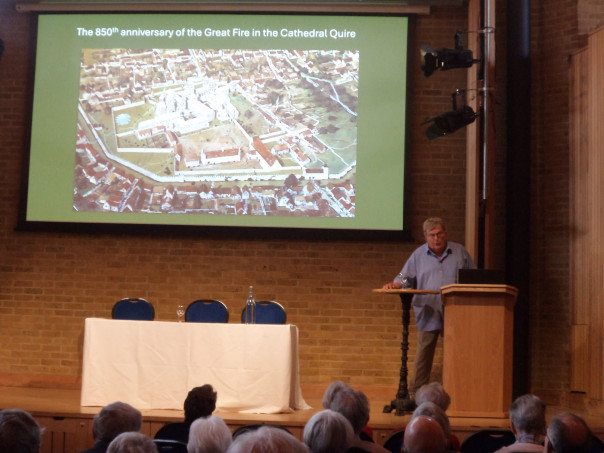
On Friday it was the Friends’ Day for the Friends of Canterbury Cathedral and while that has no direct link to CKHH, Caroline Plaisted of the Friends very kindly sends out the blogs monthly in the Friends’ e-newsletter. Furthermore, at Friends’ Day Professor Paul Bennett, Visiting Professor of Archaeology in the Centre here at Christ Church gave a lecture entitled ‘Fire, Fire! 850th Anniversary of our Cathedral’s Great Fire’. Consequently, here is a short report on Paul’s fascinating presentation. He started by describing the events of 5 September 1174 that began at the house and workshop of Lambin Frese, which was one of a number of properties behind the Burgate Street frontage and on a now lost lane (within the precincts) that had on its inner boundary the main cathedral gate into the lay cemetery. Lambin was a moneyer and therefore his property posed a major fire risk due to his furnace. Moreover, for Christ Church Priory on this day the south-easterly wind direction meant that the sparks and glowing embers blew towards the eastern part of the cathedral, getting under the lead roof.
As Paul pointed out, we know a great deal about the fire and its aftermath from the account of Gervase within his wider chronicle, Gervase telling us that three structures were destroyed before the fire was put out. For the monastic community all were serious losses but the damage done to Anselm’s great choir meant that this was a smouldering ruin albeit the walls still stood. Equally valuable is Prior Wibert’s waterworks plan because again it offers a way of knowing what was lost and further pieces of the jigsaw come from William Urry’s mapping of the city from the Christ Church Priory rentals, which similarly provide snapshots of before and after.
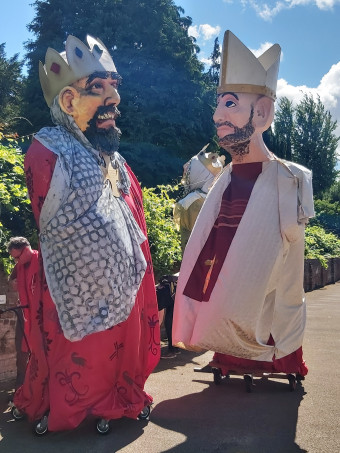
Having set the scene and provided a description of his documentary sources and the building recording work of Rupert Austin (CAT) on the Norman infirmary buildings, Paul discussed what happened next and how the prior was seemingly very keen to move Lambin (and his neighbours) away from the cathedral. Indeed, Lambin did extremely well out of the deal and by 1175 had moved his works to Stour Street where he leased two adjacent properties from the priory next to the Waterlock with a further small lane on the other side of his large property. Additionally, the prior provided a gift of 10 marks and Lambin was in receipt of a royal charter. His new residence was a stone-built property and thus it is hardly surprising that he was prepared to give up all his interests in the cathedral precincts! Being over a hundred feet long, his house was longways to the street frontage with substantial flint walls and comprising an open hall with raised dais and central hearth. To the north was a stone undercroft with Caen stone bases and a fireplace backed by peg tiles, the solar being the room above.
However, as Paul said, he didn’t enjoy it for long because he fled the country when he and other moneyers were mired in scandal in 1180. The property going first to Adam of Charing before Roger the clerk, Lambin’s son, was able to retrieve it and held it for 20 years. Thereafter it was sold to Alexander of Gloucester who established it as the Poor Priests’ Hospital (until recently the Canterbury Heritage Museum). The hospital was substantially altered in the late 14th century.
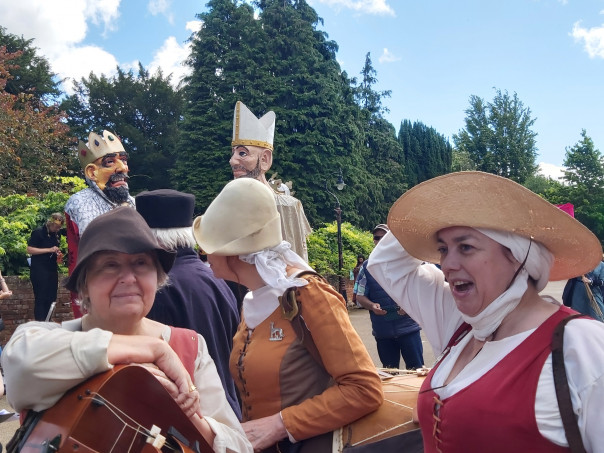
Such disasters due to fire were in a sense part of the fabric of urban living and over the medieval period Canterbury had its fair share. In part these were due to the number of metal workers, in particular, who had workshops in the city, but also hazardous were kitchens and detached kitchens and the use of tiles for roofs were encouraged by the authorities. The monks, too, took action because they effectively created a buffer zone between the back of the properties on Burgate itself and the lay cemetery because as well as removing the lanes and the properties of Lambin and his neighbours, they continued to keep this area clear. Albeit by the late Middle Ages the eastern part was used as space to build houses for several chantry chaplains, as well as the sacrist’s yard. Additionally, the gate into the precincts on the site of the later early 16th century Christ Church Gate was in place by around 1200 thereby giving access from the Bullstake to the south-west entrance to the cathedral for pilgrims.
For the final section of his presentation, Paul offered an account of the rebuilding of the choir, Trinity Chapel and Corona, the latter, in particular, comprising less than that envisioned because the upper chapel was never completed. This was due to a variety of reasons, but the 50-year period between Becket’s martyrdom and Translation was far from straightforward for the Canterbury monks. Getting caught up in the Hackington dispute, civil war involving King John and his barons, exile and issues over Stephen Langton’s appointment as archbishop, as well as the activities of the French monarch who sought to capitalise on the situation, let alone the disaster of losing William of Sens as master mason, all contributed to its longevity as a project. Nevertheless, having such talented master masons as this William, William the Englishman and Elias de Dereham did mean that when Stephen Langton presided over the Translation on 7 July 1220 it was by any measure a triumph, the eastern arm of the cathedral an extremely important architecturally transitional work in medieval Europe.
Paul’s lecture was very warmly applauded by the packed audience, and, at the subsequent tea break, a considerable number of people came up to ask questions thereby keeping him very busy!
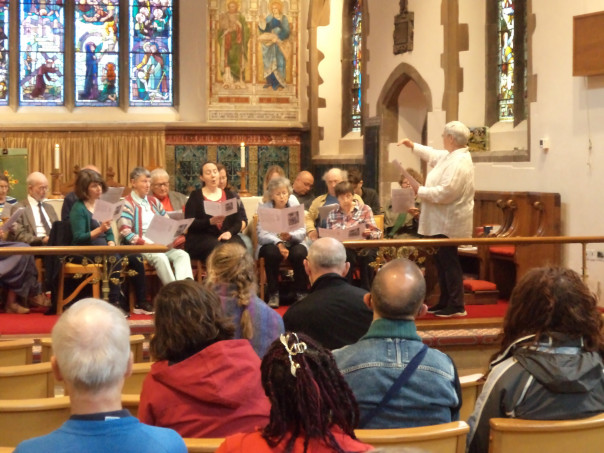
Moving on to Saturday, Dr Diane Heath, who had been working with Martin Crowther during the week on Medieval Pageant costumes with various families, joined them for the procession from the Westgate Towers through the city and this included for the first time going into the cathedral precincts. Since 2021 the audience has been growing back to its pre-Covid level which means this year it was again a very large audience that greeted the marchers and giant puppets, as well as the mounted knights as they made their way around Canterbury. While the CCCU Marketing department had a couple of stops on the Family Trail on the university’s campus, as well as hosting an early medieval encampment in Coleridge Gardens, the Centre had its stop on the Family Trail in St Paul’s church. This year we were back in the church rather than the church hall (occupied by Canterbury Archaeological Trust’s ‘mini dig and other delights) where the many young, and not so young, families joined us for the making of animal masks and constructing unicorn horns. These workshops were led by Dr Claire Bartram and as well as helping her, she had further assistance from Charlie her son, who had recently finished his ‘A’ levels, and Diane after the parade had finished. Furthermore, we would very much like to thank St Paul’s and their churchwardens for all of their help beforehand and even more on the day itself – it is a great place! This was similarly in evidence because during the day we were joined by those singing Gregorian chant at noon and a community singing group at 2pm
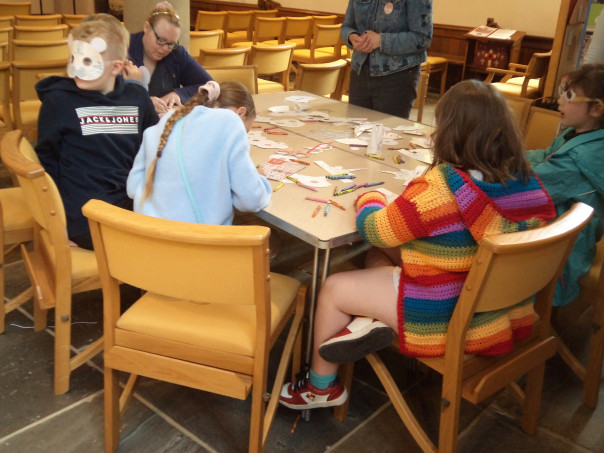
The evening brought the St Thomas More Commemoration Service at St Dunstan’s church, which is at the opposite end of the city and from a medieval/early modern perspective was outside the city’s liberty being in Westgate Without and thus in the county of Kent, not the county of Canterbury City. These commemoration services mark the Anglican feast day of St Thomas More, it being the anniversary of his execution, and this year the service was conducted by the Revd Brian McHenry while the rector, the Revd Jo Richards who is getting back after long Covid read the lesson. As I have mentioned, these services include an address or talk, last year it was Dr David Rundle (University of Kent), while this year having moved ‘down the hill’, I offered ‘Thomas More’s Canterbury: Saturday 6 July 1521’. After the lovely service, and Brian expressed thanks to the organist and choir, there were refreshments at the back of the church, these as usual were organised by Alicia Pentin. Sue Palmer, the churchwarden organised other matters including the wreath for the Roper vault that contains Thomas More’s head. Now, I have since the service provided Brian and the church with a typescript of my presentation which will go up on the church’s website, but I thought I would give just a flavour of what I said here. Once it is up on the website, I’ll add the link here.
Coming in this year was somewhat unexpected. However, once I had done a bit of digging it proved to be very useful because the 6th of July falling on a Saturday meant I could bring the two Thomases together more easily – this service and the Translation/Pageant. For, of course, as well as marking More’s execution and Anglican Church feast day, it is the eve or vigil of the feast of the Translation of St Thomas of Canterbury. Furthermore, as in 2024, in 1521 this date fell on a Saturday and 1521 was the year Margaret More married William Roper by special licence. Such a happy coincidence meant that I divided my talk into two parts, the first on Canterbury in the 1520s, the second on what the More family, with Margaret and William Roper, might have experienced if they had come down to Canterbury on the vigil that year. For like their successors today they would have seen (heard and smelt, and possibly even touched and tasted) an exciting procession.
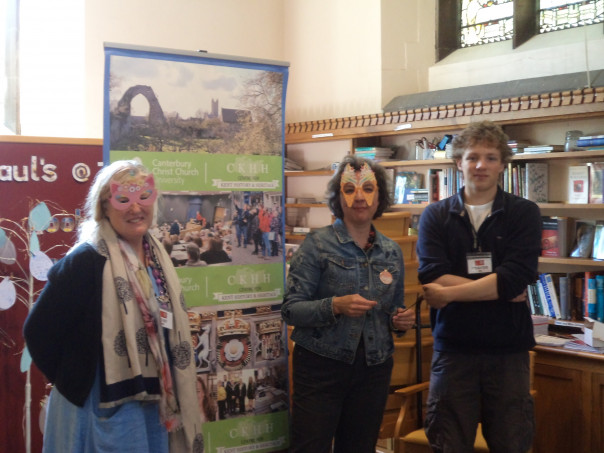
More of that in a minute but first 1520s Canterbury where the population of the liberty was seemingly somewhere between 4,700 and 5,500 depending on which multiplier you use with the 1524 lay subsidy figures. Economically, the city had experienced difficulties, especially regarding the production of cloth which led to the civic authorities adopting the twin strategy of protectionism and attempts to stimulate demand. Although the results were mixed, those industries that fared far better were shoemaking and repairing; and tailoring and hat/cap making. Moreover, Canterbury’s central position meant its long-term industries linked to hospitality remained, as did those linked to its role as a market centre.
I also thought about occupations that might have especially interested Thomas and his daughter. Although from the annual licenced artisans the evidence is slim, it is there concerning painters, writers and book binders. Additionally, while just keeping to those with links to the Ropers one of their chantry priests owned a copy of Dives and Pauper, while the incumbent at St Stephen’s Hakington bequeathed some of his books to an Oxford College where he may have studied previously.
Even though the city’s parishes were not within the orbit of the corporation directly, I noted that the wills and churchwardens’ accounts suggest parish life was good. Several churches were rebuilding their rood lofts around 1520 and the Jesus mass was being celebrated in six of the city’s parish churches. As a further mark of the introduction of such new and innovative devotional services, the Austin friars had an altar dedicated to Scala Celi and the Franciscan friars were one of a handful who had adopted the pure form of the Observants.
Having set the scene, we explored the evening of Saturday 6 July 1521. We looked at the make-up of the order of the Marching Watch with its bill men, archers and gunners, who were allowed to discharge their pieces, hence hear, smell and taste! We thought about the ‘gyantes’, the musicians, the various ward constables, the city’s serjeants and most particularly the mayor, aldermen and sheriff – what they wore in terms of ceremonial dress and their position within the procession.
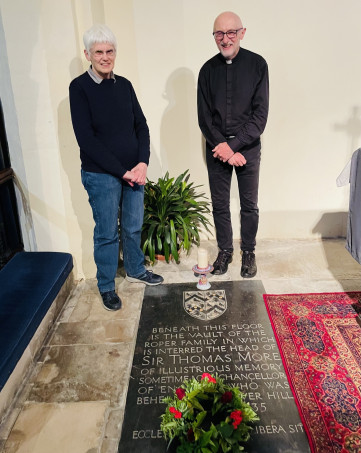
I then turned to the five pageants, again what they might have been like and especially the one we know most about – St Thomas. This portrayed his martyrdom, probably in a single performance of some kind which is likely to have been at the climax of the procession for best effect. There was considerable interest in the use of pigs’ blood for the killing and the use of a wince to raise the angel to heaven, presumably holding the martyred archbishop’s soul.
The final coincidence was equally great because 1521 was one of the years the great candle of Dover was brought up to Canterbury on this same day and while there is nothing in either archive to show that it was met by the Marching Watch, it would have been mighty odd if this had not occurred.
Thus, pilgrimage and the cult of Becket was valued spiritually, but also for its economic benefits by the Canterbury. This wasn’t new and was contested but it remained part of Canterbury fabric, but then so did its role as frontier and gateway for the movement of people, goods and ideas. – its strength but equally its fragility and when the changes More saw beginning to unfold actually came to fruition, Canterbury suffered.
This only leaves me to thank the organising committee for this opportunity and to say that next year’s speaker will be Professor Robert Bartlett (University of St Andrew’s) and I’m looking forward already to his presentation.
 Centre for Kent History and Heritage
Centre for Kent History and Heritage Sheila Sweetinburgh
Sheila Sweetinburgh 1985
1985

